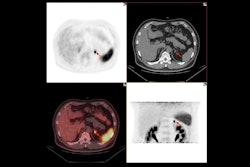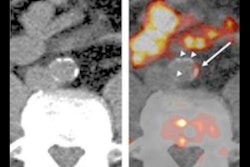European researchers have developed a PET tracer that has shown the ability to quickly and noninvasively identify life-threatening atherosclerotic plaques, according to a study published in the March issue of the Journal of Nuclear Medicine.
Gallium-68 (Ga-68) pentixafor binds to the CXCR4 receptor on inflammatory cells present in atherosclerotic plaques, which makes it possible to find and treat atherosclerosis in its early stages (JNM, March 2017, Vol. 58:3, pp. 499-506).
In addition, Ga-68 pentixafor binds more specifically to inflammatory cells than FDG and does not require that a patient fasts for six hours before imaging, said lead author Dr. Fabien Hyafil from Klinikum Rechts der Isar in Munich, Germany, and Bichat University Hospital in Paris.
Ga-68 pentixafor's ability to bind specifically to inflammatory cells in atherosclerotic plaques was validated in animal models and human subjects. Images showed inflammation in plaques in the abdominal aorta and right carotid artery of atherosclerotic rabbits. The researchers also confirmed that the radiotracer detected atherosclerotic plaques located in the carotid arteries of a small number of human patients.
The new radiotracer is expected to advance the imaging of inflammation in atherosclerotic plaques with PET and support the early detection and treatment of atherosclerosis, thus preventing heart attack or stroke, Hyafil added.




















